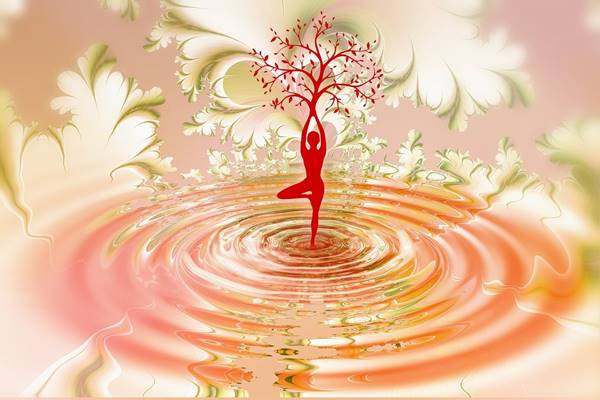Through various techniques such as deep breathing exercises, visualization, or mantra repetition, individuals can enter into a state of deep relaxation and heightened self-awareness.

1.Creating the Right Environment
Creating a suitable environment is crucial for a successful meditation practice. Find a quiet space where you can retreat from distractions and interruptions. This could be a dedicated room, a corner of your home, or even outdoors in nature. Ensure the area is clean, clutter-free, and comfortable, allowing you to relax fully. Dim the lights or use soft lighting to create a peaceful ambiance that promotes tranquility.
Consider incorporating elements that enhance your experience, such as aromatic candles or incense to stimulate your senses and deepen relaxation. If possible, choose a spot with natural light to connect with the outside world and infuse your practice with positivity.
Additionally, establish boundaries with others in your household by informing them of your meditation time to avoid disturbances. Turn off electronic devices or put them on silent mode to eliminate potential distractions.
By creating an environment conducive to meditation, you set the stage for deep introspection and self-discovery during your practice.
2.Finding a Comfortable Posture
One of the crucial aspects of meditation is finding a comfortable posture that promotes relaxation and focus. Begin by sitting on a cushion or mat, ensuring your spine is straight, but not stiff. Relax your shoulders and allow them to gently fall away from your ears. Rest your hands comfortably on your lap or place them on your thighs with palms facing up or down, whichever feels natural to you.
It’s essential to find a position that feels stable yet relaxed, allowing you to remain still for an extended period without discomfort. Experiment with different postures such as cross-legged, kneeling, or sitting on a chair with feet firmly planted on the ground. Choose what works best for you and aligns with your body’s needs.
Remember, the goal is not perfection but finding a posture that allows you to be present in the moment and fosters a deep sense of tranquility throughout your meditation practice.
3.Focusing on the Breath
One of the fundamental steps in meditation involves focusing on the breath. This technique serves as an anchor to bring our attention to the present moment, allowing us to cultivate a state of calm and clarity. To begin, find a comfortable seated position in a quiet space. Close your eyes gently and take a few deep breaths, feeling the sensation of air entering and leaving your body.
As you settle into a rhythm, redirect your attention solely towards your breath. Observe each inhalation and exhalation with curiosity, noticing its duration, depth, and quality. If thoughts or distractions arise, acknowledge them without judgment before gently returning your focus back to the breath. With practice, this exercise helps sharpen our awareness and develop mindfulness skills that can be applied in our daily lives beyond meditation sessions.
4.Observing Thoughts and Emotions
One crucial step in meditation is the practice of observing thoughts and emotions without judgment. As you sit in a quiet space, focus your attention on your breath, letting it guide you into a state of relaxation. As thoughts arise, simply acknowledge them without getting entangled or attached to them. Observe these thoughts as if they were passing clouds in the sky, allowing them to drift by without any reaction or evaluation.
Similarly, when emotions surface during meditation, resist the urge to suppress or amplify them. Instead, adopt a non-reactive stance and witness these emotions as they come and go. Notice how they manifest physically within your body—whether as tension or sensations—and let go of any desire to control or change them. By cultivating this ability to observe thoughts and emotions impartially, you develop a deep understanding of their transient nature and learn to detach yourself from their influence.
5.Cultivating Mindfulness and Awareness
One of the fundamental aspects of meditation is cultivating mindfulness and awareness. Mindfulness refers to the practice of being fully present and engaged in the present moment, without judgment or attachment to thoughts or emotions. It involves observing your thoughts, sensations, and surroundings with a non-reactive mindset.
To cultivate mindfulness, start by finding a quiet space where you can sit comfortably. Close your eyes and focus on your breath, allowing it to become your anchor to the present moment. Notice each inhale and exhale as they arise and pass away.
As you continue practicing mindfulness, you will begin to develop an increased awareness of your thoughts and emotions without getting caught up in them. You will learn to observe them from a distance rather than identifying with them entirely.
With time, cultivating mindfulness and awareness through meditation can lead to a deeper understanding of yourself, improved mental clarity, reduced stress levels, and an overall sense of well-being.
6.Ending the Meditation Session
As your meditation session comes to a close, it is important to transition out of the practice mindfully. Gently bring your awareness back to your surroundings and allow yourself a few moments of stillness before opening your eyes. Take a deep breath, feeling the sensations in your body and acknowledging any shifts in your mental state. Reflect on the benefits you experienced during this meditation, such as increased calmness or clarity.
Next, slowly and gradually begin to move your body, stretching if needed. As you stand up or change position, do so with intention and awareness. Carry the sense of calm and presence cultivated during meditation into your daily activities.
Remember that meditation is not limited to formal sessions; it can be practiced throughout the day as moments of mindful awareness. By ending each session mindfully and intentionally integrating its benefits into our lives, we nourish our well-being and cultivate a lasting sense of peace.